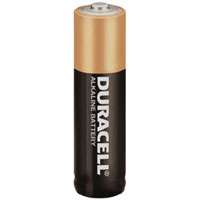New thin film lithium technology may power Christmas of the future

Battery-powered toys, radios, and portable electronic devices make fun Christmas gifts - until the batteries run down. But advances in rechargeable thin-film lithium battery technology at Oak Ridge National Laboratory might one day provide a solution to the dead-battery dilemma.
Traditional alkaline batteries can be short-lived in some devices, costly over the life of the device and inconvenient to replace. Rechargeable batteries made from highly toxic heavy metals can pollute the environment. Others have a short storage life (a rapid "self-discharge" rate). If used improperly, some lose the ability to hold a full charge, a problem known as the "memory effect."
Nancy Dudney, group leader of the Ceramic Thin Films Group in ORNL's Condensed Matter Sciences Division said thin-film lithium batteries last longer; hold their charge better during storage; recharge faster with no memory effects; can be recharged many times and can be made much smaller, lighter and more flexible than traditional batteries. Also, since they are entirely solid and contain no liquids, potential problems and hazards due to leakage, corrosion, and freezing are eliminated.
"Rechargeable thin film lithium technologies offer several advantages over conventional batteries," Dudney said. "We are still a long way from seeing them used in everyday applications like toys and games. But they are an outstanding power source for highly specialized, critical purpose applications today and hold the potential for a wider range of application in the future."
Current applications for thin-film rechargeable lithium batteries include implantable medical devices, remote sensors, miniature transmitters, smart cards, and microelectronic devices, Dudney said.
Supported by the Department of Energy's Office of Basic Energy Sciences, Division of Materials Sciences and Engineering, and Laboratory Technology Transfer Research Program, ORNL has developed materials for thin film lithium batteries that withstand temperatures from below zero to 250°C (480°F), Dudney said. This opens the door to different product designs, such as soldering the batteries into integrated circuits to power microelectronic devices. ORNL also working to make thin film lithium power sources smaller, lighter and more flexible, she said.
The drawbacks: thin film lithium batteries are more expensive than other small capacity batteries because they are more complex to manufacture and because they are still manufactured in much smaller numbers. They also are not available in standard cell sizes (AA, C and D).
But, while still years from replacing cheap alkaline batteries in toys, dolls, games, and other common Christmas gifts, the technology has other potential "holiday" applications, such as being used for radio frequency identification to track packages during the holiday shipping rush and "smart card" transactions during holiday spending.
Batteries for these and a variety of other applications are being developed by Oak Ridge Micro-Energy, Teledyne Electronic Technologies, Cymbet, Inc., Excellatron, Inc., Infinite Power Solutions and Front Edge Technologies. Each of these companies holds licenses for the ORNL technology.
John Bates, former head of the Ceramic Thin Films Group and Chief Technical Officer and founder of Oak Ridge Micro-Energy, a local thin film lithium manufacturer, said companies are interested in the technology as backup power for computer memory chips and solar-powered devices in space; notebook computers; miniature hearing aids; and even ultra thin watches.
Bates said progress is being made toward a lower-priced, mass-produced, thin-film lithium power source that is practical for a wider range of applications. In September, his firm announced an enormously successful first manufacturing run of thin-film lithium batteries.
"As we improve our ability to produce much higher volumes than previously possible with our R&D systems, thin film lithium technology becomes more feasible for a wider spectrum of high-end consumer products," Bates said. "Thin film batteries are becoming less expensive and over time we should see their price decrease significantly. The advantages of the technology make it worth the effort to pursue this goal and we are making progress."
Source: ORNL

















